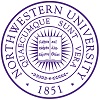专业详情
The M.S. degree programs require a minimum of 45 units beyond the equivalent of a B.S. degree at Stanford. All programs represent substantial progress in the major field beyond the bachelor’s degree.
University requirements for the master’s degree are described in the “Graduate Degrees” section of this bulletin.
MS&E master’s students complete breadth as well as depth. All are required to develop competence in optimization and analytics, organizations and decisions, and probability. In addition every student pursues a specialty in one of seven areas:
- Financial Analytics: Students who concentrate in Financial Analytics are prepared for careers requiring analytical rigor and the ability to innovate around market challenges. Example career paths include financial services, risk management, investment management, financial technology and data processing, financial regulation and policy, exchanges and clearing houses, and auditing and compliance. The concentration combines the in-depth study of quantitative techniques with practical, hands-on business problem solving. Students learn to use mathematical models and quantitative tools to solve complex problems in finance practice. The concentration exploits the intellectual ties between finance, operations research, computer science, and engineering. It offers a high level of flexibility and a range of elective courses that allow students to tailor the program to their specific career goals. Required courses immerse students in quantitative methods and deepen their understanding of finance fundamentals. Projects courses feature practical, data-driven team projects and case studies, fostering group learning and interaction with peers.
- Operations and Analytics: The Operations and Analytics track prepares students in the fundamentals and applications that are critical to careers in fields ranging from operations management in the service, healthcare, production, manufacturing, computer, telecommunications, and banking industries, to modern Silicon Valley information technology and data analytics. The program emphasizes a balance between the technical rigor of methodologies with lasting value and insightful modern applications and design challenges in a variety of established and emerging industries and operations environments. It offers a portfolio of courses in probabilistic modeling, optimization, simulation, algorithms, data science, networks, markets, and corresponding applications.
- Technology and Engineering Management: Students who concentrate in Technology and Engineering Management are prepared for careers including product and project management, management consulting, and entrepreneurship. They acquire skills to manage technical organizations, foster innovation, and deal with rapidly evolving technologies and dynamic markets. Specialized coursework is flexible, allowing students to explore and gain depth and understanding of technical organizations to develop a culture of successful innovation and entrepreneurship, along with methods for decision making under uncertainty, financial analysis, and strategic planning.
- Computational Social Science: The Computational Social Science track teaches students how to apply rigorous statistical and computational methods to address problems in economics, sociology, political science, and beyond. The program prepares students for a diverse set of career paths in data science, information technology, and policy analysis. The core coursework covers fundamental statistical concepts, large-scale computation, and network analysis. Through electives, students can explore topics such as experimental design, algorithmic economics, and machine learning.
- Decision and Risk Analysis: Students who specialize in Decision and Risk Analysis are prepared for careers including management consulting, policy analysis, and risk management, applying engineering systems analysis to tackle complex economic and technical management problems in the private and public sectors. They acquire the skills to identify and develop opportunities in uncertain situations while recognizing and hedging the downside risks. Specialized course work includes the mathematical foundations for modeling in dynamic uncertain environments to value and manage uncertain opportunities and risks, applications to public policy, and an opportunity to work on a client project under faculty guidance.
- Energy and Environment: The Energy and Environment track is designed for students interested in energy and environmental issues from the perspectives of public policy, non-governmental organizations, or corporations. This track includes core courses in economic analysis, energy resources, and energy/environmental policy analysis; and an individually designed concentration, typically emphasizing policy, strategy, or technology. Seminars provide insights into current corporate strategy, public policy, and research community developments. Energy/environmental project courses give practice in applying methodologies and concepts.
- Health Systems Modeling: The Health Systems Modeling track is designed for students interested in healthcare operations and policy. The courses in this track emphasize the application of mathematical and economic analysis to problems in public health policy and the design and operation of healthcare services.
This program allows Stanford undergraduates an opportunity to work simultaneously toward a B.S. in Management Science and Engineering or another quantitative major, and an M.S. in Management Science and Engineering.
Additional Coterminal Requirements
Coterminal master’s degree candidates are expected to complete all master’s degree requirements as described in this bulletin. University requirements for the coterminal master’s degree are described in the “Coterminal Master’s Program” section. University requirements for the master’s degree are described in the “Graduate Degrees” section of this bulletin.
After accepting admission to this coterminal master’s degree program, students may request transfer of courses from the undergraduate to the graduate career to satisfy requirements for the master’s degree. Transfer of courses to the graduate career requires review and approval of both the undergraduate and graduate programs on a case by case basis. In this master’s program, courses taken during or after the first quarter of the sophomore year are eligible for consideration for transfer to the graduate career; the timing of the first graduate quarter is not a factor. No courses taken prior to the first quarter of the sophomore year may be used to meet master’s degree requirements. Course transfers are not possible after the bachelor’s degree has been conferred.


